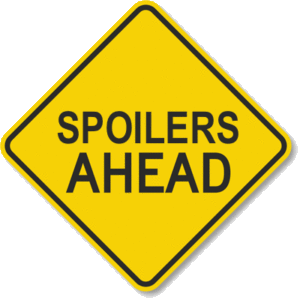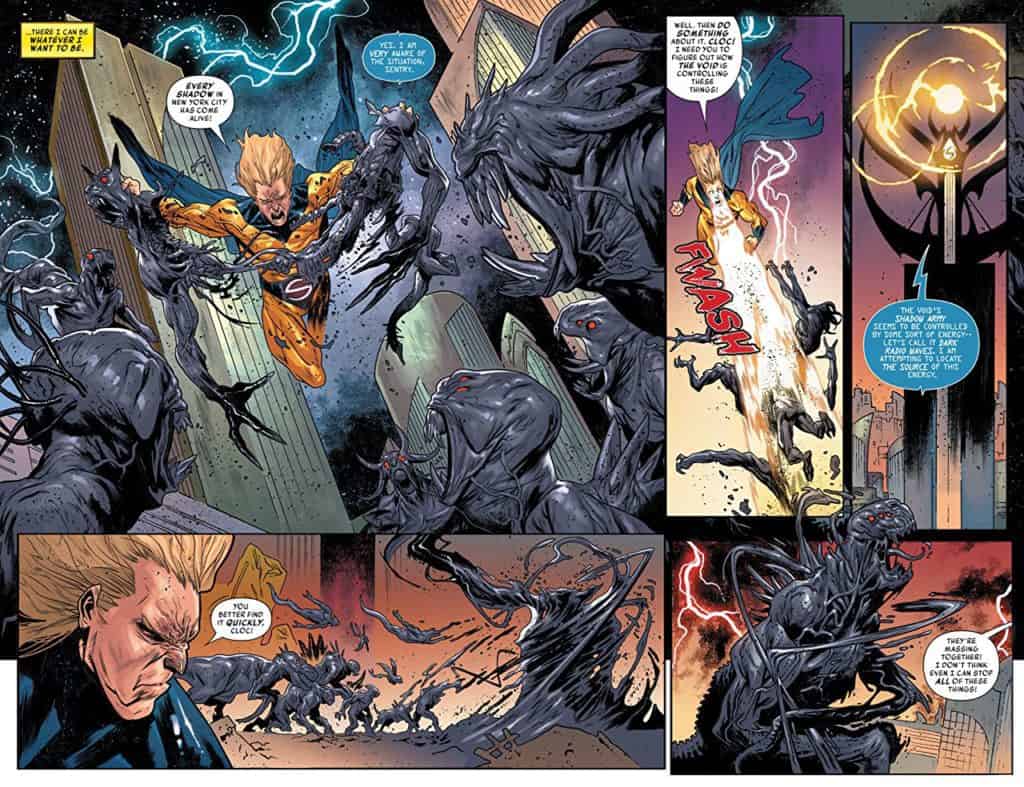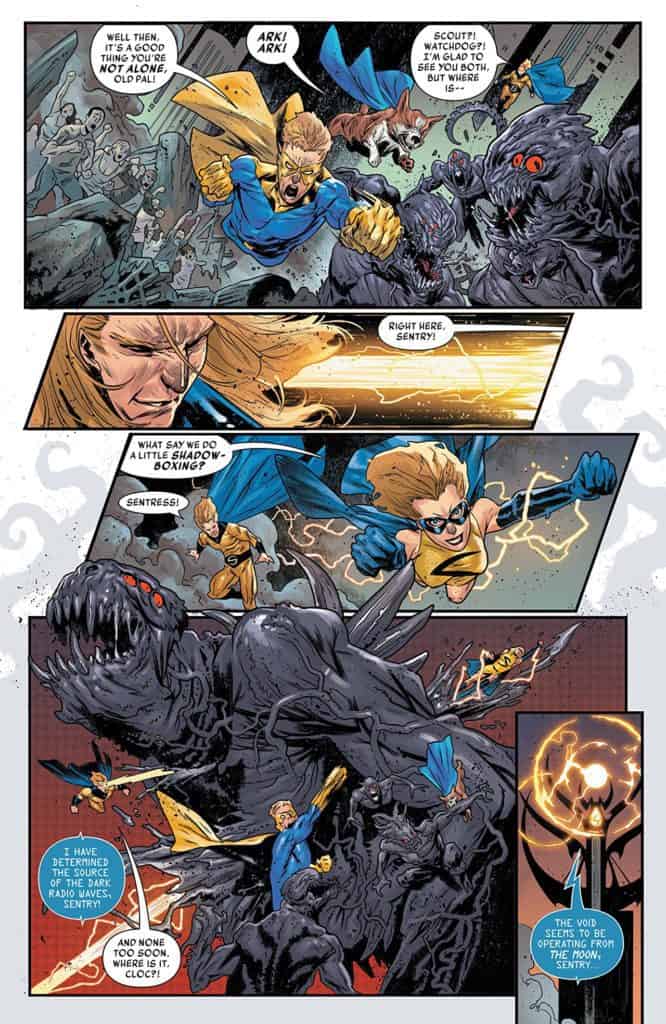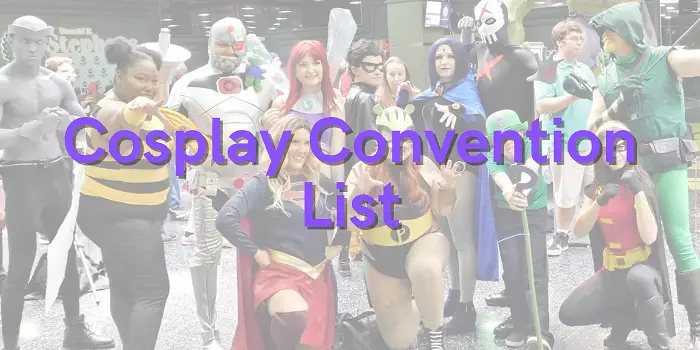PopCultHQ received an advance review copy of SENTRY (2018) #1 from Marvel Comics. Available June 27th, 2018, the creative team for this series features writing from Jeff Lemire, art from Kim Jacinto, colors by Rain Beredo, and lettering from VC’s Travis Lanham.
Here’s PopCultHQ’s review of…
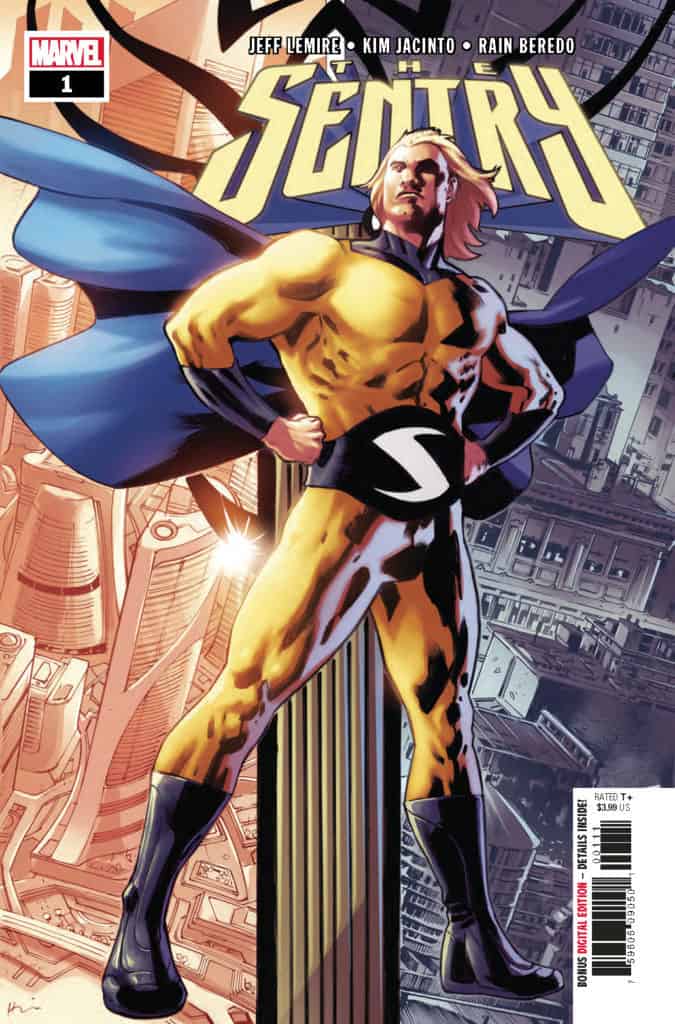
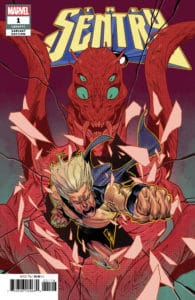

SENTRY (2018) #1
Writer: Jeff Lemire
Artist: Kim Jacinto
Colorist: Rain Beredo
Letterer: Travis Lanham
Cover Artists:
Bryan Hitch,
Kim Jacinto,
Pyeong Jun Park
In Shops: June 27th, 2018
SRP: $3.99
THE GOLDEN GUARDIAN IS BACK! FRESH FROM THE PAGES OF DOCTOR STRANGE…but is that really such a good thing?
PopCultHQ’s Comic Book Review:
Sentry #1
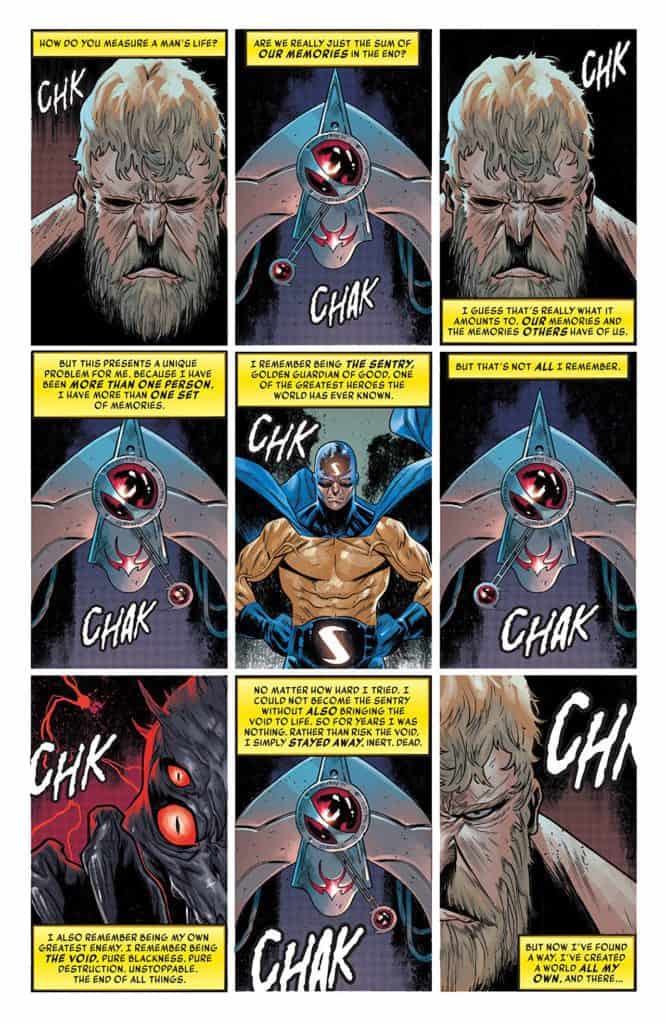 This Wednesday, a long since forgotten Marvel character returns to the Marvel Universe. His name is the Sentry and unlike the archetype he is based on (Superman anybody?), he has a more convoluted history. I had the pleasure of reading the first issue of this new series written by Jeff Lemire and Kim Jacinto but before I delve into this new series, and if it’s worth your coin today, let us examine the history of this confusing superhero.
This Wednesday, a long since forgotten Marvel character returns to the Marvel Universe. His name is the Sentry and unlike the archetype he is based on (Superman anybody?), he has a more convoluted history. I had the pleasure of reading the first issue of this new series written by Jeff Lemire and Kim Jacinto but before I delve into this new series, and if it’s worth your coin today, let us examine the history of this confusing superhero.
Believe me, Inception has nothing on this character!
Created by Paul Jenkins and Jae Lee with a slight uncredited contribution by Rick Veitch, the Sentry first flew into comic books with The Sentry #1 in September of 2000. The Sentry was written as being a Golden Age character whom, because of some event, the Marvel Universe seems to have forgotten, as well as a fake publication history inside the Marvel Universe as a comic character.
His first mini-series ran 5 issues, which then had 5 regular one-shots which peppered the Sentry throughout Marvel history by encountering various characters such as the Fantastic Four, Spider-Man, The X-Men and the Incredible Hulk. These four lead right into the final one-shot: The Sentry vs the Void. The Void was to become the Sentry’s main nemesis. All-in-all, the first total (5 issue mini-series + 5 one-shot issues) 10 issues of The Sentry created his first arc. This led to Brian Michael Bendis adding the Sentry as a member of his New Avengers. At first, playing a minor character in ‘Breakout,’ the first six issues of the series. (He ripped Carnage in half and threw him into space. INTO SPACE!) Thus becoming the focus of the second New Avengers arc – ‘The Sentry’ in issues 7-10. This would also lead to the Sentry gaining a second mini-series; written by creator Paul Jenkins and drawn by John Romita, Jr. This series ran for 8 issues. The Sentry would also be featured in The Mighty Avengers, as well as joining the Dark Avengers for a time. He would find a third mini-series entitled ‘The Age of Sentry,‘ where he would continue with the Dark Avengers until his death in the Seige mini-series event of 2010.
Ordinary everyday man, Robert ‘Bob’ Reynolds had grown middle-aged and overweight. As the Void was returning to Earth, he regained his memories and realized he was once a dashing superhero who stood for so much more. As Sentry encounters other Marvel characters, their memories of him return. Thus reaffirming himself in Marvel canon.
Writing:
What makes Sentry interesting is the same thing as Jessica Jones: creating a modern character, yet doing the work to place them throughout Marvel History as if they were always there. Except in Sentry’s case, he doesn’t even belong because even his in story, background is fake. As if that’s not convoluted enough, again we have another character who in the end sought Doctor Strange for help in erasing him from existence, or trying to.
We join Robert in the new Sentry series as a broken man. A man who is forced to live a mundane life after having been a superhero for so long in his life. Now he has to adjust to being normal. The problem is he can’t become the Sentry without bringing the Void back into existence, as the two are connected. The first issue sees Robert using a device called the Confluctor, which allows him to jump into a constructed universe where he can become the Sentry and defeat the Void. Within this constructed reality are his friends and sidekicks. We see, at the end of the issue, someone has stolen the device from Robert’s apartment.
A rather straightforward, but also boring issue. It begins with action within the Confluctor and then as Robert departs his fictional Sentry world, we see his unshaven, overweight self in the real world where he just mopes around and is hounded by Misty Knight and the Aberrant Crimes Division, a group who watches people who pose abnormal problems just like Robert Reynolds.
Where Jeff Lemire excels with his relaunch of this once played-out publicity stunt for Marvel is in the fictional world of Robert’s own creation. Sentry is an archetype; he is the Superman-type character complete with his sidekick Scout, his female counterpart named Sentress, and even a pet dog named Watch Dog. This archetype is complete with a droid named Cloc, who serves much like Superman’s Keelex in his own Fortress of Solitude. The Sentry could be a great commentary and archetype for Superman and similar characters except Alan Moore did this almost 22 years ago with his work on Supreme. So even then, the Sentry and its convoluted history as well as story had already been approached and handled.
What one can only hope is that Lemire breaks away from the stereotypical need to force Sentry into continuity, accept that he is already here and a part of Marvel history, and focus on the character’s future. The Age of Sentry was all about telling a Golden/Silver Age comic book story, even right down to mimicking the artwork. While that is all well and good, sometimes, even though fun, it does get old very fast. Sometimes too much nostalgia can hinder progression.
Art:
As usual, I’m not an artist so what I have to say about Kim Jacinto’s art may not be all too helpful. I’m familiar with his work from such books as Indestructible Hulk and Avengers. He also did work on Angela: Queen of Hel and The Unworthy Thor mini-series. What I do like is the cleaner style over John Romita, whom is the quintessential Sentry artist in my opinion. Between Kim’s art (he does his own pencils and inks) and colors of Rain Beredo you get a nice package. The art has a serious dichotomy between worlds. Where inside the false world of the Sentry, everything is bright and crisp and outside in the real world, the art and colors become more drab and dark; something Zack Snyder would drool over.
PopCultHQ’s overall assessment:
This is a hard one. Would I recommend The Sentry? It’s hard to say, I’m a bit biased, although I came into this project with no expectations and pushed my dislike for the Marvel Superman aside. The first issue is not newbie-friendly; the series is one that comes with heavy baggage. For current fans of the character who want to know what became of their favorite hero after the events of The Seige, then this is your oasis, this is the book for you. People who want to get to know the Sentry, this book is NOT for you. NOT until you’ve done some reference and research.
Christian’s Rating:
2 Out of 5 Stars

Again, why such a low rating? I’m rather harsh on new books and first issues even more so. Like a pilot episode of any TV series, a first issue has to be
captivating and pull you in. I was digging the book until we left the fictional Sentry world for the more mundane real world, the comic devolves into an almost mocking reality TV episode of ‘Ex-Superheroes: Where Are They Now?’ I almost expected to see Robert Reynolds show up for an episode of Syfy’s Superhero Makeover. Perhaps the series can get better? One can only hope.
SENTRY #1 can be purchased on ComiXology and available
at your local comic shop and online retailers on Wednesday, June 27th!
Be sure to follow the creative team!
Writer – Jeff Lemire
`
`
Letterer – Travis Lanham
`
`
`
`
Publisher – Marvel Comics
`
`


